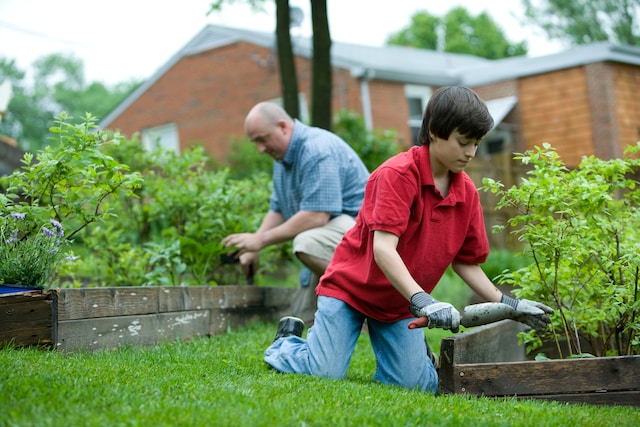Gardening is an artistic pursuit that requires a blend of imagination, knowledge, and respect for nature. No matter the size of your outside space, a basic grasp of gardening fundamentals can help you grow healthy plants. From laying out your garden’s foundation to choosing your plants and maintaining them, this article will cover the basics of gardening.
Learning About Your Local Climate and Environment
It is important to learn about the local ecology and climate before beginning a gardening project. Knowing your hardiness zone, typical temperature ranges, average rainfall, and soil type is essential since various plants flourish in different situations. With this information in hand, you’ll be better able to choose plants that will thrive in your environment.
Finding an Appropriate Spot
The success of your garden relies heavily on the care you take in selecting its location. Think about things like where you live in relation to water, trees, and the sun. Understanding the light levels in various regions of your garden will allow you to pair plants with their best growth circumstances, since most plants need a set quantity of sunshine each day.
High-Quality Groundwork
Garden plants cannot survive without the nutrients, water, and firm ground that soil provides. It is crucial to evaluate and enhance the quality of your soil before planting. The pH, texture, and drainage ability of the soil may all need to be evaluated. Adding organic material to soil, such as compost, well-rotted manure, or mulch, improves its fertility and structure and fosters plant development.
Proper Plant Choice
One of the most important aspects of gardening is choosing plants that thrive in your specific environment. Think about the plant’s preferred growing conditions, its water needs, and its ability to withstand pests and diseases in your area. Native plants, which have evolved to thrive in your area, are often the best bets since they survive the elements with little human intervention.
Techniques for Successful Planting
Careful planning is essential for successful planting. Take care not to over- or under-plant a certain plant by adjusting the depth and breadth of the hole accordingly. Then, backfill the hole with dirt, tamping it down carefully to eliminate air pockets, and plant the tree or shrub. After planting, give the plant plenty of water to help it adjust to its new surroundings.
Effective Methods of Watering
While watering is essential for plant development, too much or too little might stunt growth. Deep, infrequent watering promotes robust root development and drought resistance. It’s ideal to water your plants first thing in the morning so they can soak up the moisture before the sun becomes too hot. Drip irrigation or soaker hoses may be used to irrigate plants directly at the root zone without wasting any water.
Mulching: Keeping Moisture in and Weeds Out
Mulching is a straightforward practice that has many positive effects on a garden. It controls soil temperature, keeps soil wet, and prevents weed growth. Wood chips, straw, and compost are all examples of organic mulches that provide nutrients to the soil as they decompose and increase soil fertility. Spread mulch around the plant’s foundation, but keep it a few centimeters away from the stem to avoid rot.
Controlling Pests and Illnesses With Care
Keeping a garden free of pests and illnesses requires constant vigilance. Biological, cultural, and mechanical approaches are combined with the selective application of pesticides in the context of Integrated Pest Management (IPM). Beneficial creatures are spared unnecessary damage, and natural pest management systems are encouraged, thanks to this strategy.
Upkeep and Repairs on a Schedule
Maintaining a garden is a continual endeavor that calls for consistent effort. In order to promote new growth and extend blooming, it is necessary to do maintenance operations like as trimming, deadheading, and removing old flowers. Pests, illnesses, and nutritional shortages may be caught early and treated before they spread by conducting regular inspections.
Constantly Changing and Improving
In order to be successful, gardeners must be open to change and new information. Don’t stop exploring and learning about new methods, vegetation, and strategies. Keep a gardening notebook to record your thoughts, ideas, and experiences. Join gardening groups, participate in classes, and consult with seasoned gardeners to increase your gardening expertise.
Conclusion
Gardening is a very satisfying hobby because it promotes human interaction with the natural world, the creation of aesthetic value, and the sustenance of life. By putting into practice the aforementioned guidelines, you may cultivate a garden that not only looks beautiful but also contributes to your health and happiness. Keep in mind that learning how to garden is an ongoing adventure, with new challenges and discoveries waiting to be made with each passing season. Have fun in the dirt!

